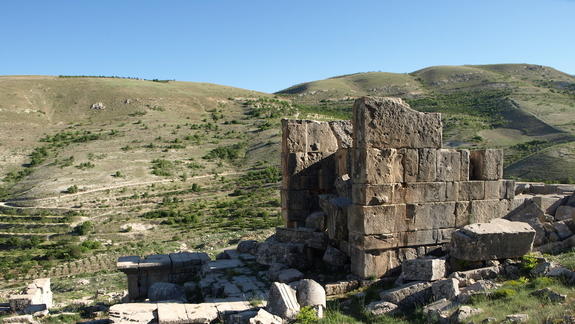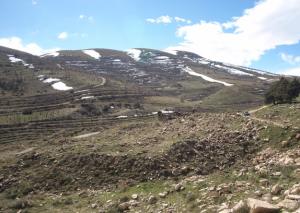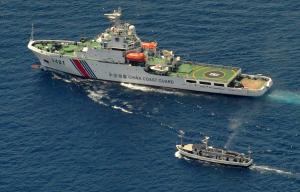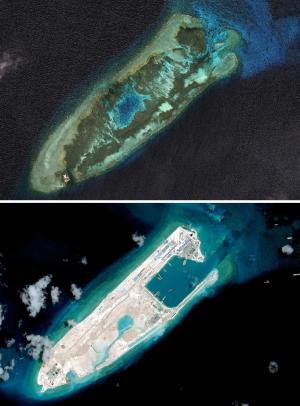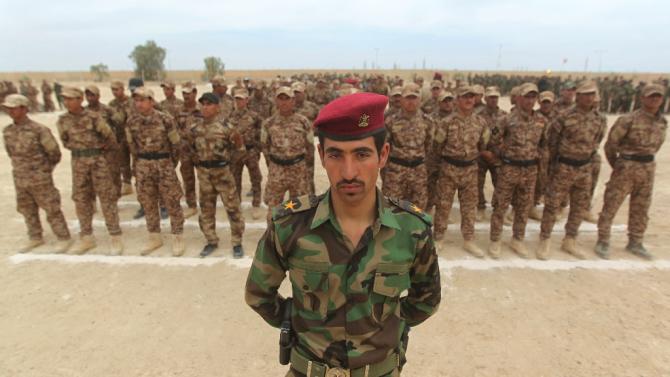Amriyat al-Fallujah (Iraq) (AFP) - More than 1,000 Sunni fighters from Anbar joined Iraq's Popular Mobilisation force Friday as part of government efforts to make the fight against the Islamic State group a cross-sectarian drive.
"Your country has been stolen by a bunch of thieves and thugs and you must fight to take it back," Anbar Governor Soheib al-Rawi said at the event.Political, security and tribal leaders attended a large parade at a base in Amriyat al-Fallujah in a bid to give new momentum to the province's homegrown anti-IS fightback.
"Let this day be the day when we declare a massive revolution against Daesh... kick Daesh out of our homes, fight their extremist ideology and tighten the noose around them," he said, using an Arab acronym for IS.
Parts of Anbar province have been under jihadist control since before the nationwide June 9 offensive by IS, and the capital Ramadi has been on the brink of falling completely for months.
The counter-offensive has so far been spearheaded by Shiite militias, some of which are now operating under a government-controlled umbrella known as the Hashed al-Shaabi -- or Popular Mobilisation Brigades.
However, Prime Minister Haider al-Abadi has been keen to deflect criticism of the organisation as a Shiite-only body, and has defied challenges within his own camp to push for the inclusion of Sunni fighters in their home provinces.
Hundreds of Sunni tribal fighters had already been fighting under the Popular Mobilisation banner in Anbar in recent weeks, but Friday marked their official recruitment.
Sunni fighters in the troubled western Iraqi province had so far been using their own weapons and not receiving payment. The new recruits are due to receive a monthly salary of around $650.
View gallery
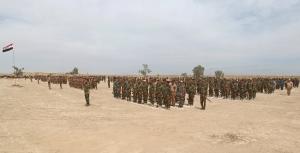
Iraqi Sunni volunteers from the Anbar province take part in their first training session at a traini …
- Rebuilding trust -
The new system comes with an organised vetting process designed to avoid the lack of accountability that prevailed under previous attempts to enlist Sunni fighters in recent years.
A vetting committee including representatives of the governor's office, the Iraqi military and the Popular Mobilisation has been set up.
"There will not be the same randomness and chaos as before," Rawi told reporters on Thursday.
He said that, according to Abadi's executive order, the plan was for the Sunni force with the Popular Mobilisation units in Anbar to reach 6,000 men.
What officials said were the roughly 1,100 men recruited on Friday will receive weapons at a base in Habbaniyah, another government-controlled area in eastern Anbar, in the coming days.
"I am confident we will be able to wipe them (IS) out, but we need weapons because so far we have been using our personal weapons," said Omar Mamduh Fayadh, a 24-year-old fighter from the Amriyat al-Fallujah area.
Several of the new recruits who paraded on Friday were teenagers, some of them as young as 15 and 16.
Shiite volunteers proved they were an essential part of the military fightback against IS over recent months, most recently when the city of Tikrit was retaken last month.
Abadi announced that Anbar was the next target for his government, but suggestions that militia groups accused of sectarian abuses would come to fight deep in the Sunni stronghold of Anbar had created widespread unease.
With support from the United States, which has been sending weapons to the defence ministry destined for Sunni fighters, the Iraqi government has accelerated efforts to raise a local force in Anbar.
The United States, which leads a 60-nation international coalition conducting daily air strikes, plays a key role in the fight against IS and has hundreds of military advisers in Anbar.
Mistrust runs deep between Iraq's Sunni and Shiite politicians, but tensions have eased since Nuri al-Maliki made way for Abadi at the helm and the tone of Friday's speeches was conciliatory.
"We found in you a dear, proud, and generous brother who carries the burden of Iraq, all of Iraq," Rawi said.
Friday's inaugural battalion was named Nahrawan after a 7th century battle near Baghdad which is seen as a unifying symbol in Islamic history.







